Most important about Final Fantasy X | X-2 HD Remaster is that the package includes two great PlayStation 2 RPGs, whose gameplay and systems hold up very well to this day. I recently talked more in-depth about the nuts and bolts of Final Fantasy X-2 here, and tried to do the same thing for Final Fantasy X but got nostalgically sidetracked. You can check those for more detailed individual thoughts.
This is not a review of the games themselves, but a review focused on how well the games succeed at being an HD re-release, and how well they do or don’t justify a second look from people who’ve already experienced these games in their original forms. This is a lucky situation for this package, as it’s based on the International versions of Final Fantasy X and X-2, both of which include a lot of new content never seen in North America. To Japan, this HD Remaster is simply a visual upgrade and portability, but to the North American audience, this content is new and will be considered such in this review.
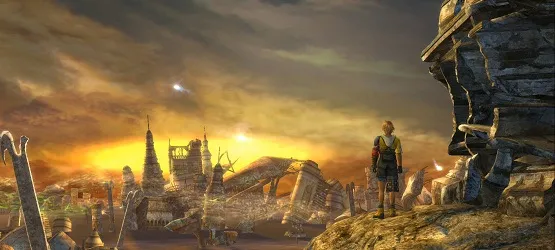
The headlining update “HD” is naturally the first improvement players will notice. The visuals are smooth throughout and, while not without occasional goofy-looking moments, succeed at making this game look like a recent release. Both games look modern and gorgeous, especially in those signature CG cinemas. Many times, I found myself noticing details around houses and towns that never caught my eye before. Your nostalgia will not be shortchanged.
The shinier visuals come at a cost: increased load times for both games. These are noticeable — long enough to justify an artist drawing a new corner watermark time filler for them — but their impact on the gameplay seems fairly minimal, in both games.
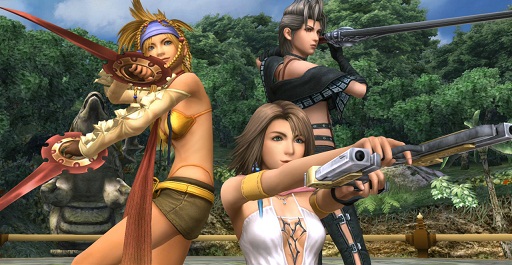
The hardware transition was not all so smooth, however. The frame rate unfortunately drops more often than expected. As a pair of PS2 games going into HD for the first time, it’s understandable that there’d be visual imperfections. The somewhat less-detailed minor characters and occasional jagged edges are, in these circumstances, forgivable. But the frame rate drops too often. It drops when running through a few of the games’ villages, and even more when the camera pans during a cutscene — not major, but not minor either. If the characters are talking and the camera is panning or zooming, it feels as if there’s about a 50-50 chance of a stutter somewhere. It’s so noticeable and so omnipresent that I actually used the frame rate drop as a cue that someone I needed to talk to was nearby in FFX-2. I would have walked right past the person, except I saw Yuna’s movement slow down greatly; it ended up acting like a destination marker on a map, except it wasn’t programmed to be there. While choppiness shows up often and is noticeable, it fortunately isn’t huge enough to make a big dent in the experience.
North American fans never got the International versions of these two games, which came with additional content. (In the PS2 era, Europe got the International Version of X as the default, but not X-2.) So while the HD upgrade landed in the re-release’s title, there’s actually much more new material than the improved graphics.

For example, Final Fantasy X-2 gets Last Mission, a whole new game of its own that plays in the RPG subgenre Roguelike (see also: Rogue, Nethack, or in more modern times ZHP, Pokemon Mystery Dungeon, or Shiren the Wanderer). The FFX-2 version of this game allows players to take one of the three leading ladies into an 80-floor dungeon. Special twists on genre conventions have a character’s HP completely dependent on the equipped Dress Sphere; when HP reaches 0, that Dress breaks. One can find other copies of it lying around and fuse them into more powerful versions, so all hope isn’t lost with the shattering of a Dress or two. Roguelike aficionados will probably find Last Mission taking a while to become challenging, while newcomers could get stomped by the difficulty of this RPG subgenre.
It’s hard to imagine the masses’ reaction to this game, so while I enjoy Roguelikes, I also acknowledge that a lot of people don’t. Your mileage may rest upon some combination of your appreciation for the subgenre and your love of the FFX-2 ladies. Whatever the case, its inclusion adds a ton of never-before-seen content for gamers outside of Japan.
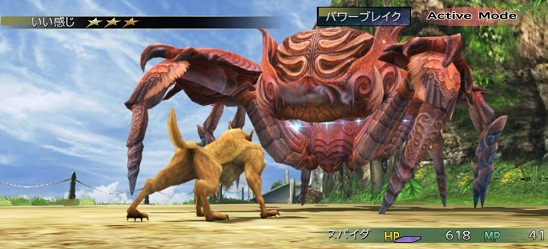
Within FFX-2 proper, there are other big changes, one being the ability to swap out any of the girls for a captured monster, kind of like Dragon Quest Monsters. Only the original three heroines can be manually controlled, but the player can change the monsters’ equipment and job class outside of battle. This game was using one of Final Fantasy XIII-2‘s coolest features a whole generation earlier. How about that?
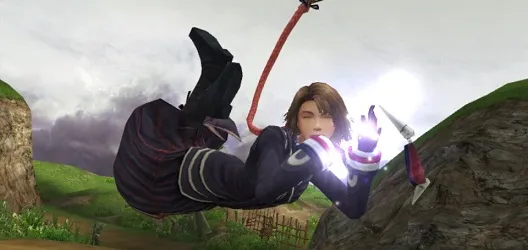
Yuna, Rikku, and Paine will get two new outfits, which in FFX-2 translates to two new job classes, the Psychicer (above) and the Festival Goer. Both have a good balance of pros and cons that make them solid additions to the game’s already rich collection of jobs. Festival Goer relies quite a bit on luck and chance, but that’s kind of the theme (like playing a carnival game), and that’s perfectly fine when considering that it wasn’t even included in the first cut of FFX-2.
Final Fantasy X gets the Expert Sphere Grid, a new take on the original character leveling system. Players can choose the first game’s style, if they prefer. The original Grid allowed customization while also holding characters (for the most part) to certain archetypes, at least for the bigger portion of the game. The Advanced Sphere Grid enables one to do this, but it allows much more freedom right from the game’s beginning, as all characters begin very close to each other.
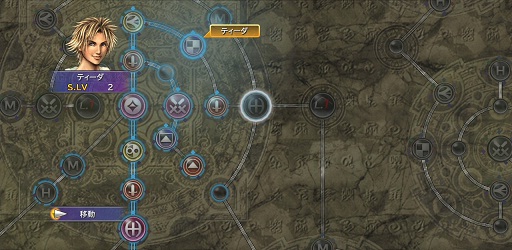
Wanna teach Tidus the four basic black spells of Fire, Blizzard, Water, and Lightning almost right away? You can do that. Wanna quickly give Cure and Esuna to every member of the party? Make it happen. Wanna scream? You bet your sweet ass I do.
The downfall of going too much against the grain is that it might negate the party’s Overdrives. If you want to have some fun making Auron your source of black magic or make Tidus your primary healer, you’ll essentially be throwing away their Overdrive skills, because it’s a physical attack in the case of both characters. The same would be true in reverse, if you wanted to buck trends and make Lulu your enforcer with her deathmog, you’d be doing so while turning away from the magic power boosts that make her Overdrive worthwhile.

Moreover, each character’s base stats can take some serious time to overcome. Taking someone like Auron or Tidus down a magician’s pathways on the Sphere Grid will grant him plenty of boosts in magic power, but it will take several of such upgrades just to reach the level at which Lulu or Yuna would start out. For example, about midway through my game, Blizzaga by Tidus was doing about the same as a regular Blizzard by Lulu, even though I’d taken a very magic-focused route with Tidus. Starting stats just overpowered any Sphere Grid based efforts, for most of the game. So while it’s fun and different to take the road less traveled, the statistical fruits of such an endeavor won’t manifest until the late game.
Things do have a way of evening themselves out. The deeper you get, the more Sphere Grid you can cover, and therefore, you could inch yourself ever closer to your dream Bizzaro party. Overall, despite the base stats and the mid-game plateau, the Expert Sphere grid adds a completely new take on FFX‘s leveling system, increases customization, and makes FFX easily worth another play for fans.
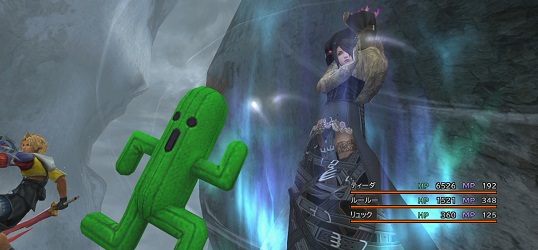
Some design elements have aged very well, while others taste of rust. Invisible walls still show up once in a while in new games, but hitting them over and over again in (even in areas which the minimap says are explorable) reminds us of design elements best avoided. Perhaps worse, FFX‘s lengthy cutscenes can’t be skipped.
If you’ve already played these games and think you might save time by skipping a cutscene or two here and there, think again, as these babies are unskippable. There’s no doubt that a great many longtime fans and FFX first-timers will want to see them all, and there’s no problem with this, but it seems like a curious omission in 2014. I’m quite familiar with Final Fantasy X and I know which cutscenes I can do without on my replay; I’d like to be able to trim the fat. Worse than that, however, comes in the case of a Game Over. If a lengthy scene or series of party conversations precedes a certain battle, you’ll have to sit through the whole thing again. The story is one of the most important aspects in most Final Fantasy games, but lack of modern comforts such as skippable cutscenes in a game many fans have already beaten seems odd.
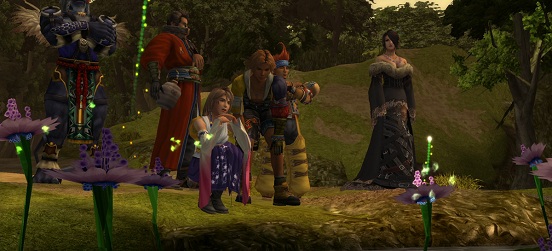
Another strange absence is the lack of touchscreen compatibility on the Sphere Grid. Both games did receive a touch-based update with a quick cure function, so it’s not like the game was left unfitted for its new hardware. I even say this as someone who deplores most touchscreen use and avoids it when possible. It felt like Final Fantasy X‘s Sphere Grid presented an opportunity for good use of the feature, but it went untouched. …That sentence was unintentional, but it shall remain.
Both games see a revamp of their music as well. I find it to be a mixed bag, but recommend sampling the tracks here to see for yourself if you’re down with the new versions of the tunes.
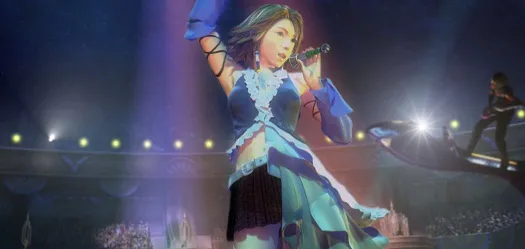
Final Fantasy X | X-2 HD Remaster comes with a number of small flaws, but those can’t stand up to its strengths. The addition of an entirely new game in FFX-2: Last Mission and the way the Expert Sphere Grid turns FFX upside-down are huge enough. Add in FFX-2‘s new and useful Dress Spheres, battle arena, and monster catching, along with X‘s dark aeons, and there’s already reason enough for avid fans to give these games a replay, even before considering the visual enhancements.
For information on scoring, please read our Review Policy here.
-
Two RPGs from a golden era.
-
The world of Spira now portable.
-
Both battle systems still fantastic after all this time.
-
Advanced Sphere Grid (FFX)
-
Last Mission (FFX-2)
-
New International Version content justifies another playthrough.
-
Nostalgia for some, great new experiences for others.
-
HD visual upgrade.
-
Unskippable cutscenes, often lengthy (FFX).
-
Choppy frame rate and slowdown in most game-engine cutscenes (especially in FFX).
-
Touchscreen additions, but not on FFX's Sphere Grid? What?
-
Rearranged soundtrack has more misses than hits; nostalgic fans might prefer the punch of the original.
-
Slight load times added.








